SUMMARY
This is AI generated summarization, which may have errors. For context, always refer to the full article.
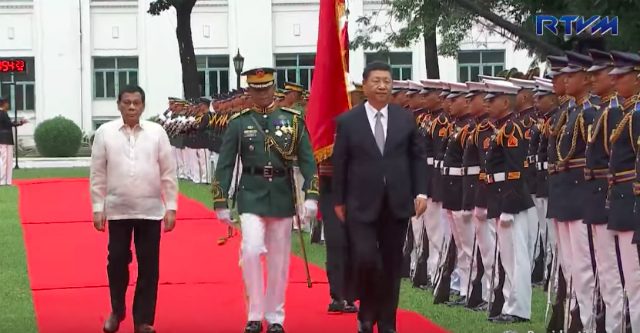

MANILA, Philippines – The sight of the lone Chinese flag behind Presidents Rodrigo Duterte and Xi Jinping as they made their way past the honor guards in Malacañang on Tuesday, November 20, caught the eye of not a few.
Many noticed the absence of the Presidential Standard – the flag that bears the official coat of arms of the President of the Philippines. It is present wherever the chief executive is present, especially during the review of guards.
It is, after all, “one of the oldest official protocol [practices],” said historian and former Presidential Communications undersecretary Manuel Quezon III.
“The Presidential Standard is carried as a symbol of command, of civilian supremacy over the military, and as the personal flag of the commander in chief who is the president,” he told Rappler.
Protocols, however, are often changed depending on the sitting president.
“Presidents, of course, while expected to maintain tradition, can always break with tradition. It can be a dramatic statement with deep meaning, without having to say anything,” Quezon tweeted.
Rappler reviewed at least 77 state visits of world leaders to the Philippines – from the administration of Manuel Quezon to Benigno Aquino III to get a sense of what they did during welcome ceremonies.
Under the Duterte administration, the absence of the Philippine presidential flag and lone presence of the guest’s country flag (that of China) during the welcome ceremony and review of the guards for Xi was unlike any other state visits.
The Philippine presidential flag was present during the review of the honor guards for Brunei Sultan Hassanah Bolkiah and Indonesian President Joko Widodo – who went on state visits in April 2017.
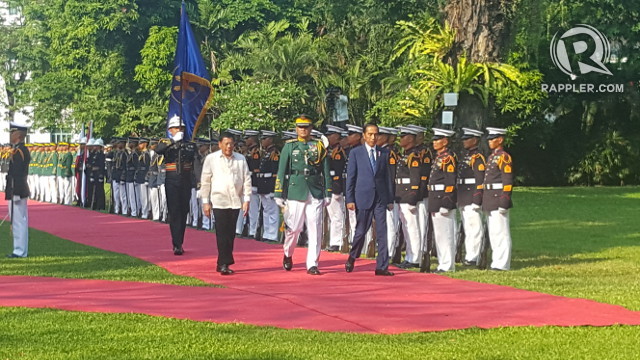

Meanwhile, based on photographs and videos accessed from archives, only 3 patterns were noticeable during the welcome ceremonies and review of honor guards:
- There was no flag behind the two leaders
- Only the Philippine presidential flag was present
- Both flags of the Philippine president and the visiting leader’s country were present
There is no record of a past state visit when the only displayed flag behind the leaders as they reviewed the honor guards belonged to the guest.
Then-president Benigno Aquino III chose to use his presidential flag during the 19 state visits under his administration.
Swipe right or left to navigate.
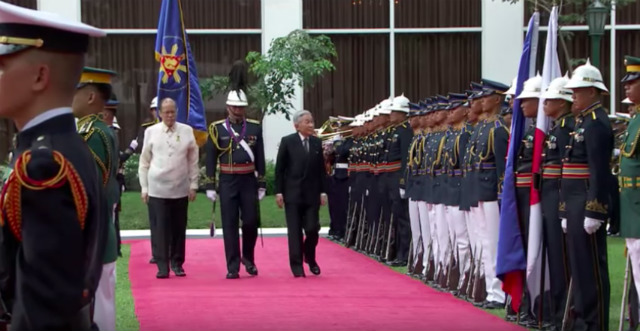

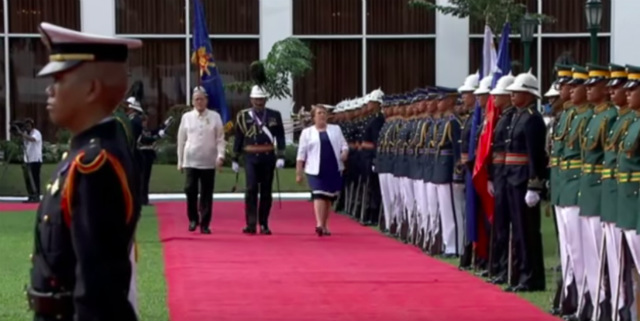

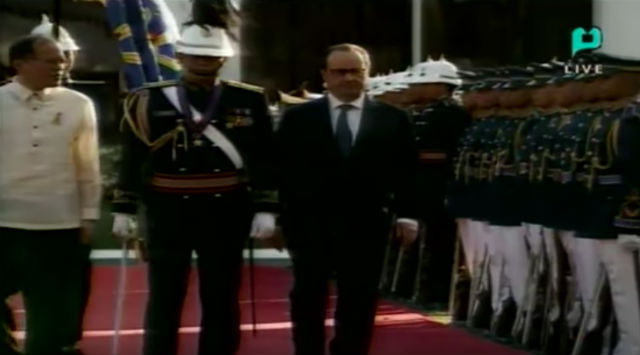
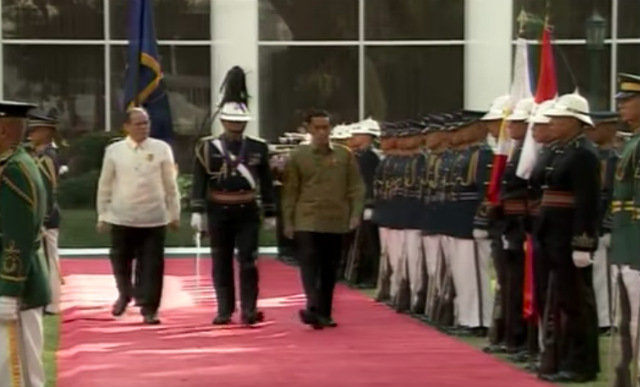
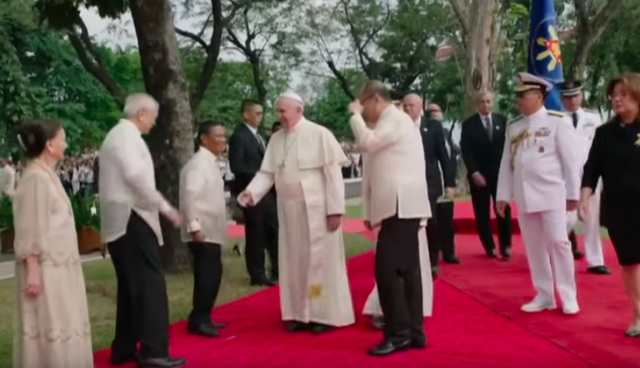
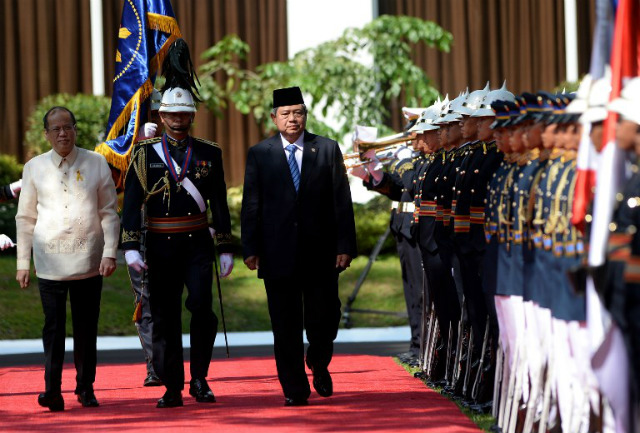


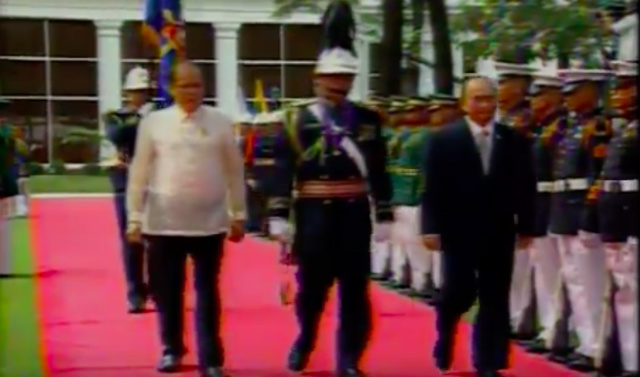
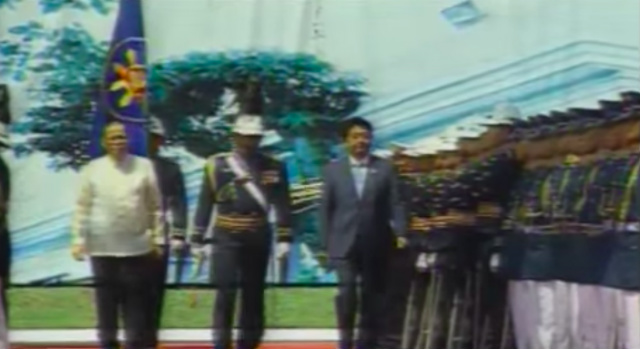
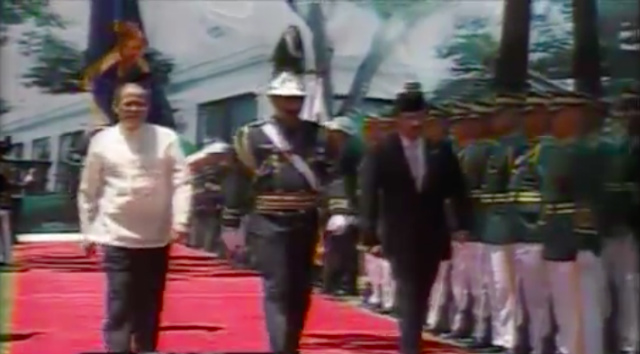
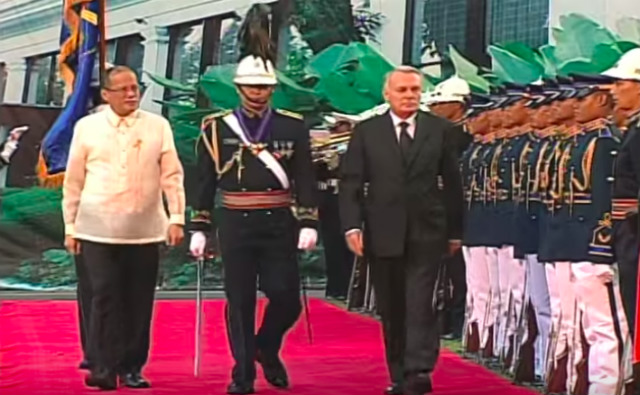
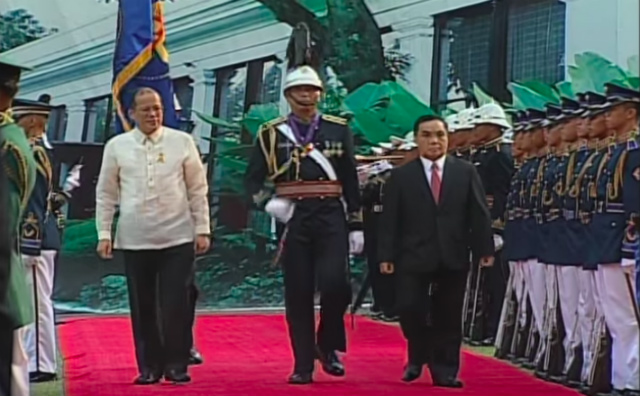




There was a noticeable absence of flags – either the Philippine president’s or the visiting leader’s – behind the leaders as they made their way past the guards during the 13 state visits under then- president Gloria Macapagal Arroyo.
She, however, made use of the Philippine presidential flag during military events or when reviewing the honor guards before a trip abroad.
Swipe right or left to navigate.
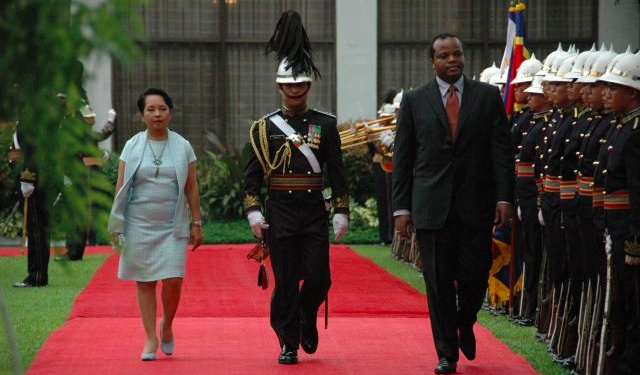
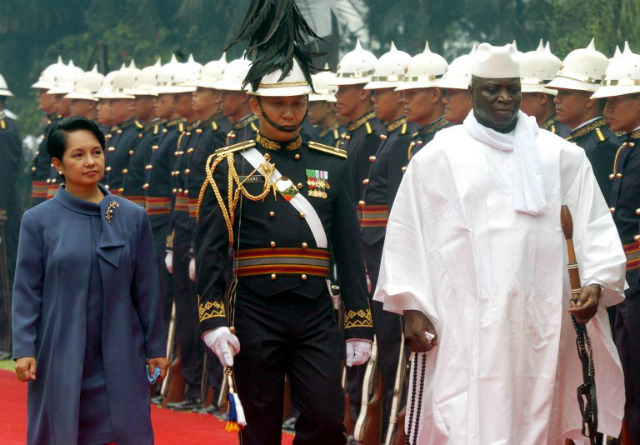
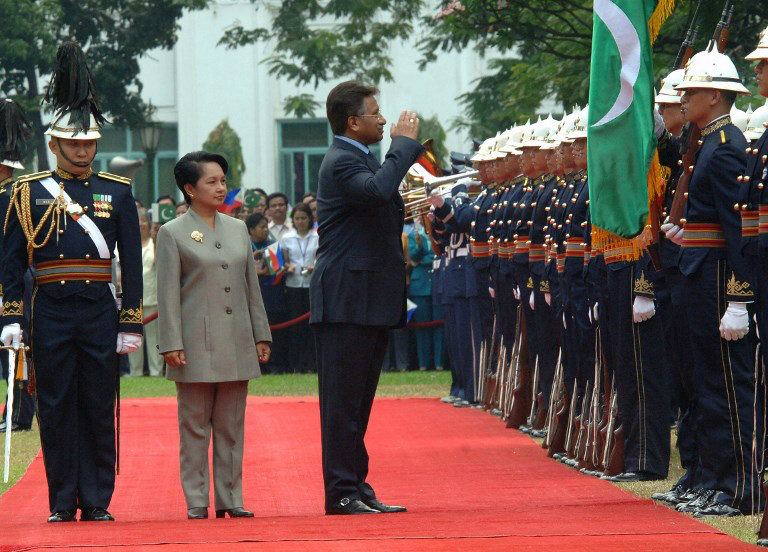


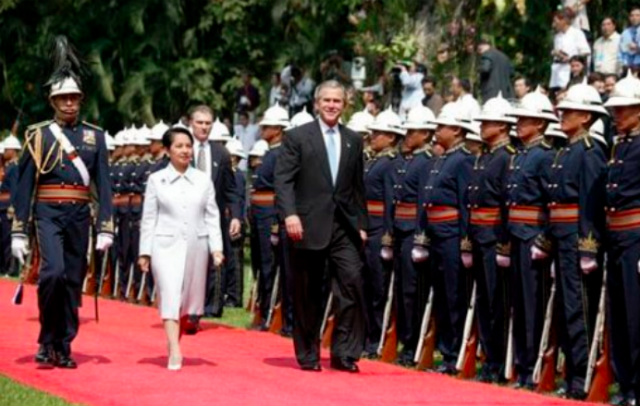
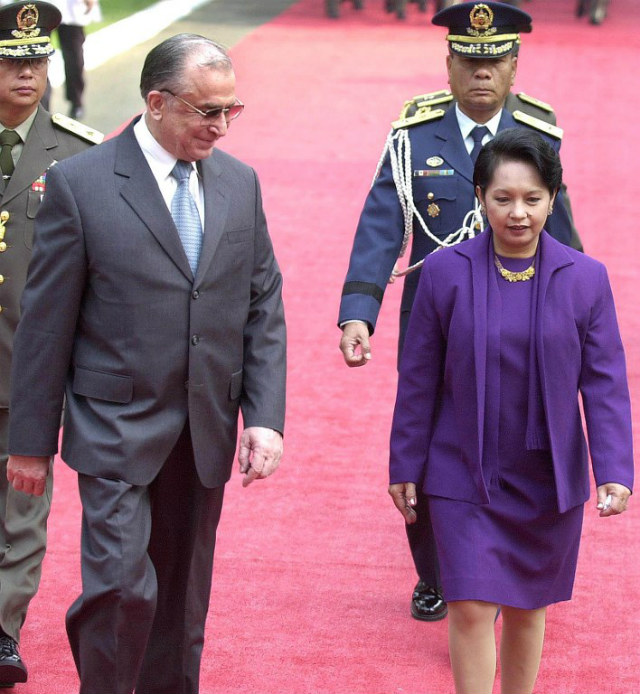
It was the same with then-president Joseph Estrada who welcomed 3 leaders during their state visits.
Ramos, meanwhile, was not consistent. He used only the Philippine presidential flag when receiving two leaders during their state visits while he used both of their flags in other instances.

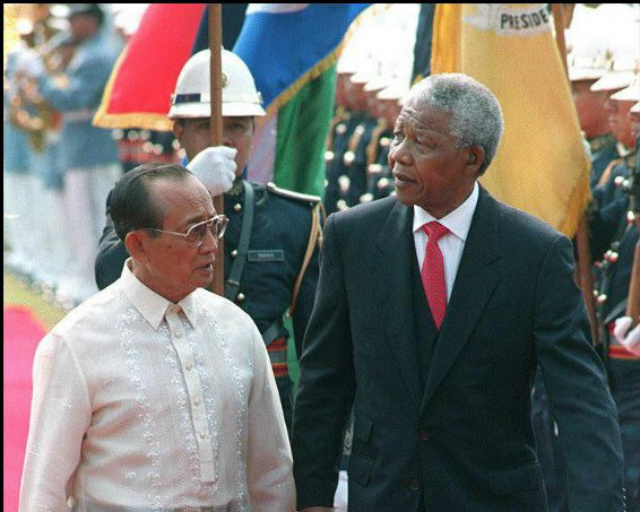
There were 22 state visits to the Philippines during the 21-year rule of the late dictator Ferdinand Marcos from 1965 to 1986.
Based on photographs and videos accessed by Rappler covering at least half of these visits, Marcos displayed his presidential flag along with the flag of the visiting leader.
Swipe right or left to navigate.
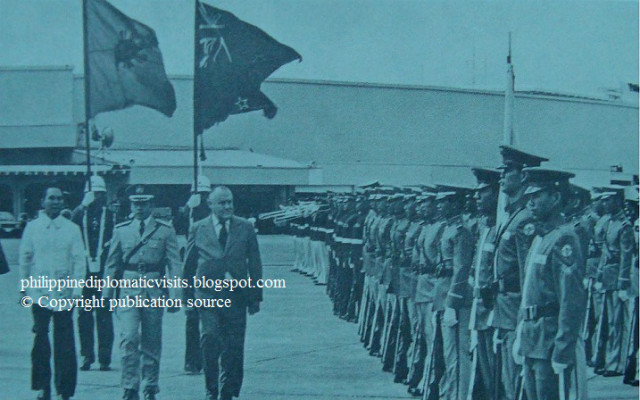

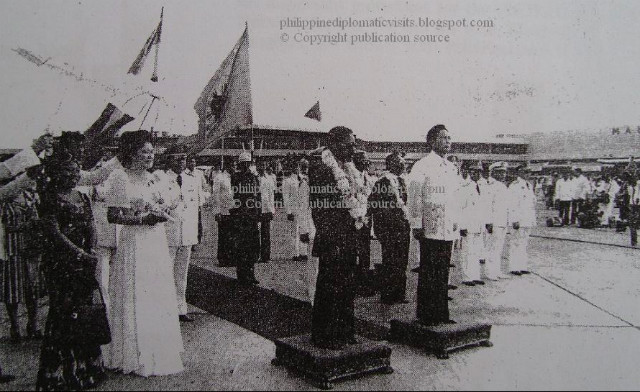
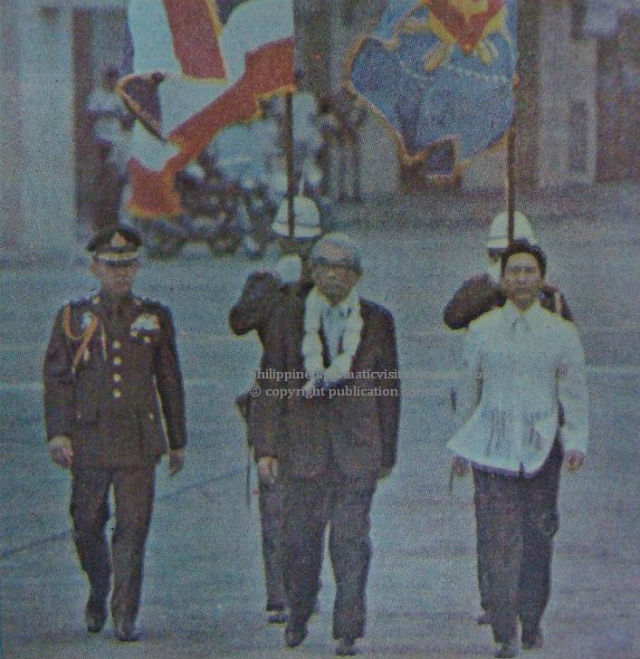
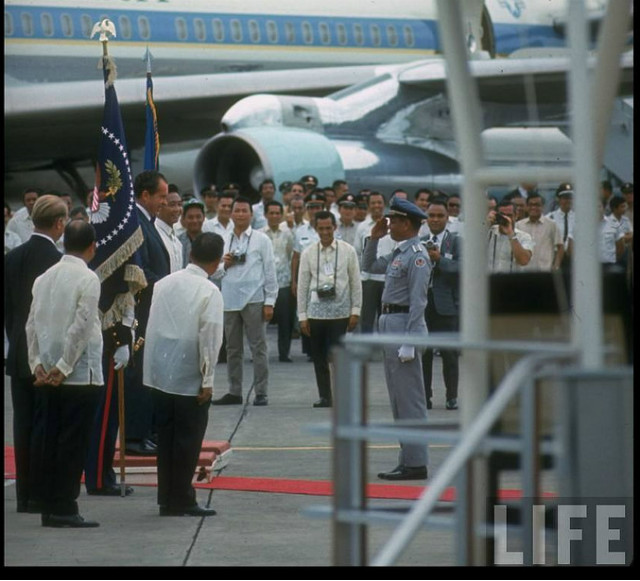
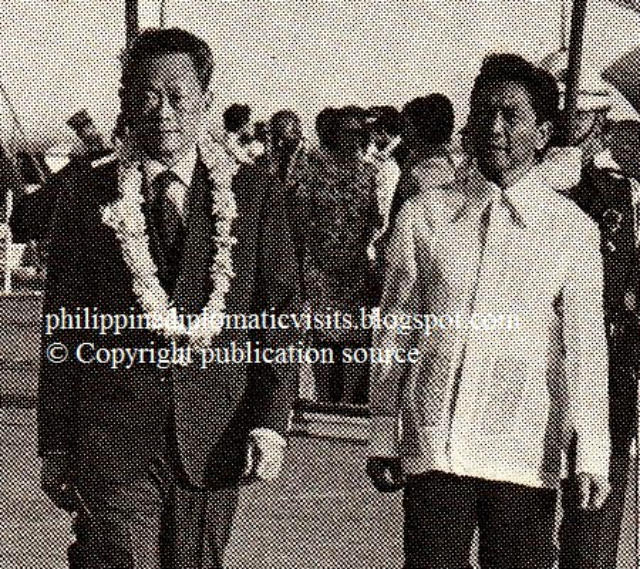
Former presidents Diosdado Macapagal, Carlos Garcia, and Manuel Quezon also displayed their presidential flags at least once during state visits of their guests.
Lone China flag under Duterte
The display of foreign flags in the Philippines is, of course, not prohibited but is subject to guidelines that put importance on the Presidential Standard and the Philippine flag.
Given the long-standing protocols governing the presidential flag during state visits, it’s not surprising that the sight of the Chinese flag being carried behind Duterte and Xi caught the ire of many Filipinos.
This, amid a supposed blossoming relationship that is also putting at risk the country’s stakes in the West Philippine Sea. (READ: TIMELINE: Philippines-China relations under Duterte)
“To substitute a foreign flag is to very obviously relinquish symbol of command and substitute it with the symbol of sovereignty of another nation,” Quezon said.
“When a long-established custom is dispensed with, even if ostensibly as a sign of favor, it is liable to send the message of subordinating tradition to the objective of the moment, which, in this case, was to give maximum prestige to the visiting head of state,” he added. – with reports from Pia Ranada/Rappler.com
Add a comment
How does this make you feel?
There are no comments yet. Add your comment to start the conversation.